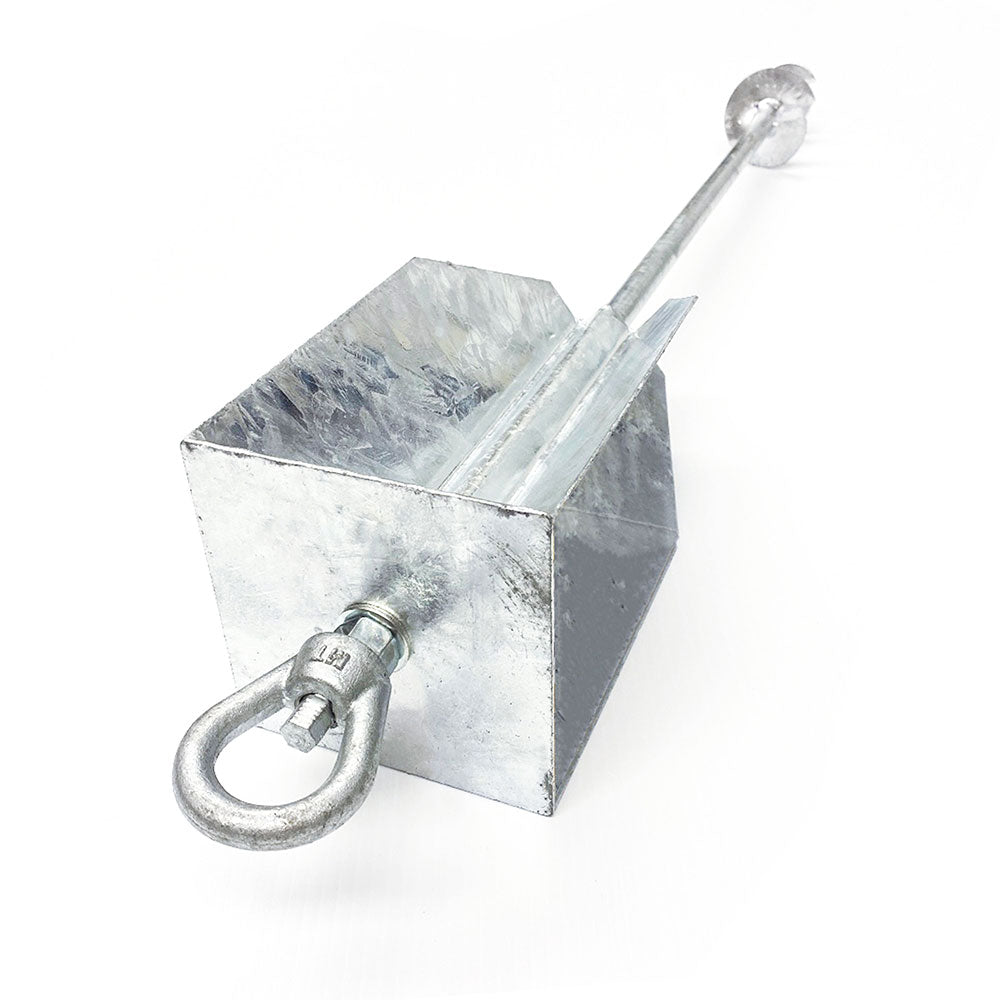Explore the Various Kinds of Ground Support for Your Next Project
When beginning on a construction or landscaping job, understanding the numerous sorts of ground anchors readily available is important to guaranteeing both stability and longevity (Ground Anchor). From auger anchors, which master varied soil problems, to risk supports made for momentary installations, the choices are countless. In addition, concrete and screw anchors existing distinct advantages in particular circumstances, while deadman anchors are tailored for applications requiring resistance to side pressures. The option of an appropriate anchor type can significantly affect the general success of your job, triggering further expedition into their respective benefits and applications.

Auger Anchors
Auger supports are a prominent choice in different construction and landscaping projects as a result of their distinct style and efficient securing abilities. These anchors include a helical screw-like shaft that is driven into the ground, enabling for a safe and stable hold. The spiral style promotes easy installation and maximizes resistance versus side forces, making auger anchors specifically reliable in applications such as fencing, short-lived frameworks, and disintegration control.
The installation process of auger anchors is fairly uncomplicated. Auger anchors can be quickly removed and recycled, which includes to their cost-effectiveness and sustainability.
Among the significant benefits of auger supports is their capability to disperse tons evenly throughout the bordering soil, reducing the danger of dirt disruption and lessening environmental effect. In addition, they are much less vulnerable to loosening up or heaving gradually contrasted to standard securing approaches. Auger supports are an outstanding option for tasks requiring sturdy and reputable anchoring remedies.

Risk Anchors
When it pertains to safeguarding structures in a range of exterior applications, stake supports supply a reputable and straightforward solution. These supports are generally built from long lasting products such as steel or light weight aluminum, developed to withstand environmental anxieties while providing optimum security. Their simple layout allows for quick setup, making them a suitable selection for short-term or long-term anchoring demands.
Risk anchors are especially helpful in safeguarding tents, covers, and other light-weight frameworks against wind and climate. They function by being driven right into the ground at an angle, producing a strong hold that resists pull-out pressures - Ground Anchor. The performance of stake supports depends on numerous aspects, consisting of dirt kind, moisture content, and the angle of installation
For included safety and security, numerous risk supports come with add-on points for straps or ropes, enabling stress changes as needed. In applications such as landscaping or building, they can efficiently stabilize equipment or frameworks on unequal surface. Overall, stake supports offer a economical and functional service for safeguarding numerous outdoor installations, making them a favored selection for contractors and do it yourself lovers alike.
Concrete Anchors
Concrete supports offer a robust remedy for protecting frameworks to concrete surfaces, making certain stability and safety in different applications. These supports are necessary for tasks ranging from property building and constructions to large-scale industrial installments. They come in various kinds, including expansion anchors, sticky supports, have a peek at this website and undercut supports, each created for specific tons demands and ecological problems.
Adhesive supports use high-strength epoxy or resin to bond the support to the concrete, providing premium load-bearing abilities, specifically in fractured concrete situations. Undercut anchors develop a special shape within the concrete, offering phenomenal holding power, specifically in applications where tensile tons are prevalent.
Choosing the proper concrete support entails taking into consideration aspects such as the weight of the tons, the condition of the concrete, and environmental conditions. Correct installment methods are vital to make certain optimal efficiency and integrity. When performed properly, concrete anchors substantially boost the architectural stability of various jobs, making them indispensable in modern-day construction practices. Recognizing the certain demands of your task will aid in choosing the right type of concrete support for the job.
Screw Anchors

Screw supports are i was reading this a versatile securing solution that can be properly utilized in a variety of applications where standard concrete supports might not be enough. These anchors contain a helical layout that allows them to be easily driven into the ground, making them perfect for usage in soil and various other substrates. Their distinct structure gives superb holding power and resistance to pull-out pressures, making them suitable for numerous tasks, from landscape design to architectural support.
One of the key advantages of screw supports is their simplicity of installment. They call for marginal equipment and can typically be set up without the need for excavation, which saves both time and labor expenses. Additionally, screw anchors can be gotten rid of and recycled, supplying a lasting remedy for short-lived applications.
Screw supports are specifically helpful in locations where dirt problems are challenging, such as loosened or sandy dirts. Their ability to be set up at varying depths enables modification based upon details project demands. On the whole, screw supports offer a reliable and dependable anchoring technique, making them an excellent choice for designers and specialists seeking reliable remedies for their tasks.
Deadman Anchors
Deadman anchors act as a robust option for supporting structures in challenging conditions, especially where standard anchoring methods might fail. These anchors are composed of large, hefty objects buried underground, which create resistance against side forces. The design commonly entails a straight element, such as a block of concrete or a metal plate, buried in the soil, to which cable televisions or bands are affixed.
The efficiency of deadman supports lies in their ability to distribute lots over a bigger location, minimizing the threat of failure in unpredictable soil problems. They are especially advantageous in applications such as maintaining walls, short-lived structures, and incline stabilization, where dirt movement can jeopardize the integrity of the framework.
Installment of deadman supports calls for cautious preparation to guarantee they are put at the appropriate deepness and orientation, optimizing their load-bearing ability. While they may require even more labor and product than light-weight anchors, their dependability in negative problems makes them important for lasting jobs. In addition, deadman supports are flexible and can be adjusted to numerous applications, making Get More Information them a go-to option for designers encountering unique obstacles in their jobs.
Final Thought
Auger anchors excel in diverse soil conditions, while risk anchors fit short-term applications. For concrete surfaces, expansion and sticky anchors supply trustworthy choices, and screw supports offer adaptability in tough surfaces.
Furthermore, concrete and screw supports present unique advantages in details scenarios, while deadman supports are tailored for applications requiring resistance to lateral pressures - Ground Anchor.Auger anchors are a prominent choice in different building and landscaping jobs due to their unique layout and efficient anchoring abilities. They come in different types, consisting of development anchors, sticky supports, and undercut anchors, each created for particular load demands and environmental conditions
Sticky anchors make use of high-strength epoxy or material to bond the support to the concrete, supplying premium load-bearing capabilities, specifically in split concrete situations. Overall, screw supports provide a dependable and reliable anchoring approach, making them an exceptional option for engineers and specialists seeking effective options for their tasks.
 Haley Joel Osment Then & Now!
Haley Joel Osment Then & Now! Devin Ratray Then & Now!
Devin Ratray Then & Now! Macaulay Culkin Then & Now!
Macaulay Culkin Then & Now! Burke Ramsey Then & Now!
Burke Ramsey Then & Now! Christy Canyon Then & Now!
Christy Canyon Then & Now!